Tadao Ando : A Journey from Boxing to Architecture
Tadao Ando is one of the most renowned architects in the world, celebrated for his masterful use of concrete, natural light, and minimalist design to create spaces that evoke tranquility and introspection. Rooted in the principles of Zen and Japanese aesthetics, his work seamlessly integrates architecture with nature, transforming buildings into profound sensory experiences. From museums and religious structures to private residences, Ando’s designs emphasize simplicity, geometric precision, and a deep engagement with the surrounding environment.
Born in Osaka, Japan, in 1941, Tadao Ando's path to becoming a world-renowned architect was unconventional. Raised by his great-grandmother, Ando initially pursued a career as a professional boxer. However, a visit to Tokyo during his high school years profoundly changed his trajectory.

There, he encountered Frank Lloyd Wright's Imperial Hotel, an experience that ignited his passion for architecture. Determined to follow this newfound calling, Ando immersed himself in self-directed study. He attended night classes in drawing and interior design and embarked on extensive travels to observe and analyze the works of architectural masters such as Le Corbusier, Ludwig Mies van der Rohe, Frank Lloyd Wright, and Louis Kahn.
In 1968, without any formal architectural training, Ando established Tadao Ando Architects and Associates in Osaka, marking the beginning of a prolific career that would earn him global acclaim and numerous prestigious awards, including the Pritzker Architecture Prize in 1995.
Architectural Style: The Intersection of Minimalism and Spirituality

The architectural design of Tadao Ando is truly breathtaking. His singular style is strongly influenced by the simplicity of the Japanese culture, as evidenced by his emphasis on negative space and spatial circulation. Because Ando incorporates Zen ideas into his designs, his structures offer a contemplative, almost spiritual experience. The result is a holistic experience for those who enter his buildings, which emphasizes simplicity and inward feelings over superficial aesthetics.
Ando may have learned architecture on his own, but he has never stopped looking for ways to honor his Japanese heritage, even as he has traveled to learn about other regional styles. He believes that architecture carries great responsibility, as it can shape or change the identity of a society or place. Ando treats his work with reverence because he recognizes the profound effect it can have on people and their surroundings.

Ando's fascination with concrete as a building material is likely a result of his admiration for the architecture of Le Corbusier. His clean and seemingly weightless structures defy logic with their minimalist design. Ando employs simplicity to allow individuals to experience the spirit and splendor of nature. Instead of using decorative elements, he emphasizes the buildings' natural surroundings and their integration with the natural world.
Notable Works: Embodiments of Sacred Space
The architectural brilliance of Tadao Ando is on full display in his works, each of which exemplifies his distinctive approach and mastery of light and space. The Azuma House, also known as the Row House in Sumiyoshi, is an early example of his work and a prime example of his style. While the owner chose to have no windows on the street-facing side of the building so that he could feel removed from the hustle and bustle of the city, Ando's ingenuity allowed for natural light to enter through a courtyard. Visitors are sure to be mesmerized by the building's intricate network of passageways and the way it blends indoor and outdoor spaces.
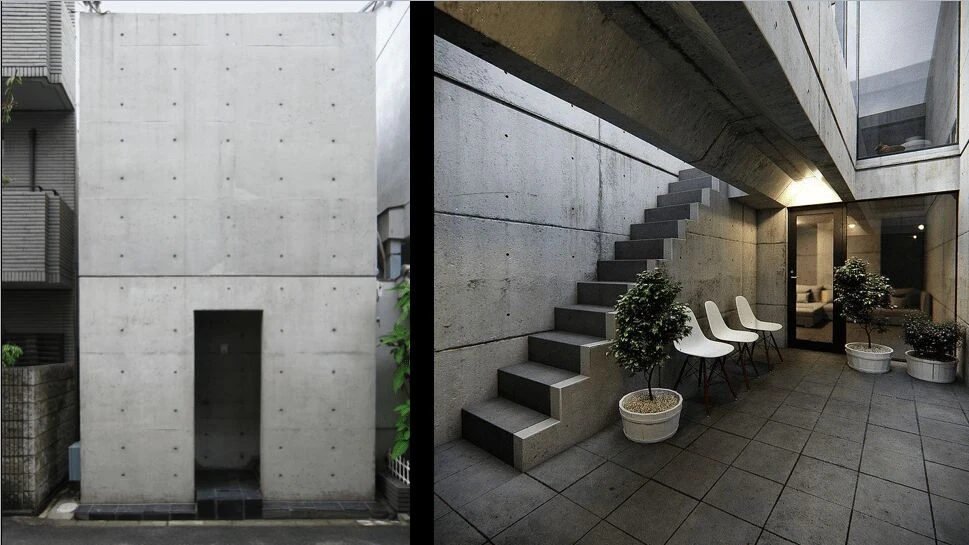
One of his most celebrated works is the Church of the Light in Ibaraki, Osaka. Completed in 1989, this church features a minimalist design where a cruciform cutout in the concrete wall allows natural light to penetrate the interior, casting a luminous cross that serves as the focal point of the space. This interplay of light and shadow fosters a meditative atmosphere, inviting introspection and spiritual reflection.
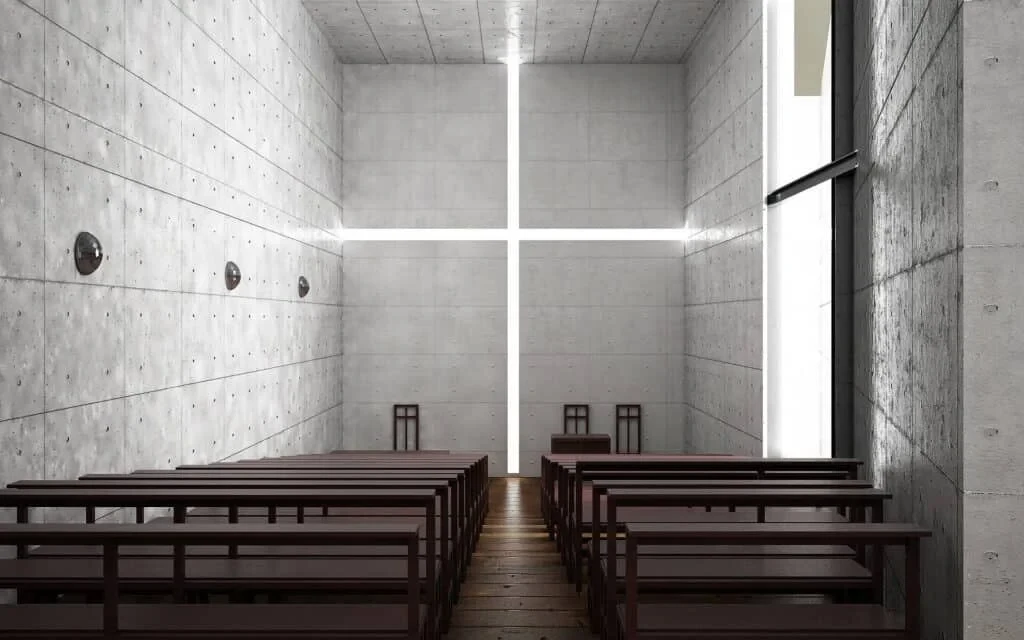
The Water Temple Honpukuji is also noteworthy, as it combines the traditional Shingon Buddhist temple with a modernist aesthetic. The interior sanctuary can be reached via a staircase located beneath the pool of water that serves as the structure's roof and reflects the surrounding landscape.
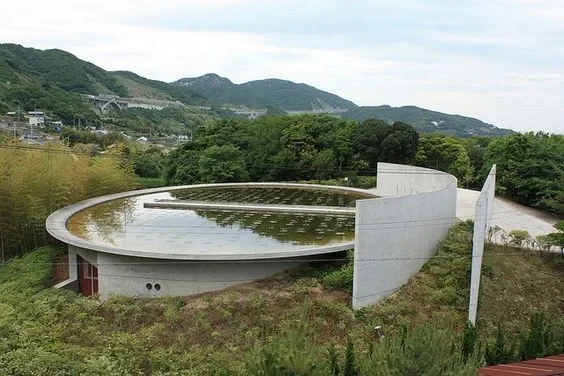
Another significant project is the Church on the Water in Tomamu, Hokkaido. Completed in 1988, this chapel is situated amidst a serene landscape, with a large floor-to-ceiling window offering unobstructed views of a reflecting pool and the natural surroundings. The design embodies the Japanese concept of 'shakkei,' or borrowed scenery, integrating the exterior environment into the spiritual experience of the interior space.

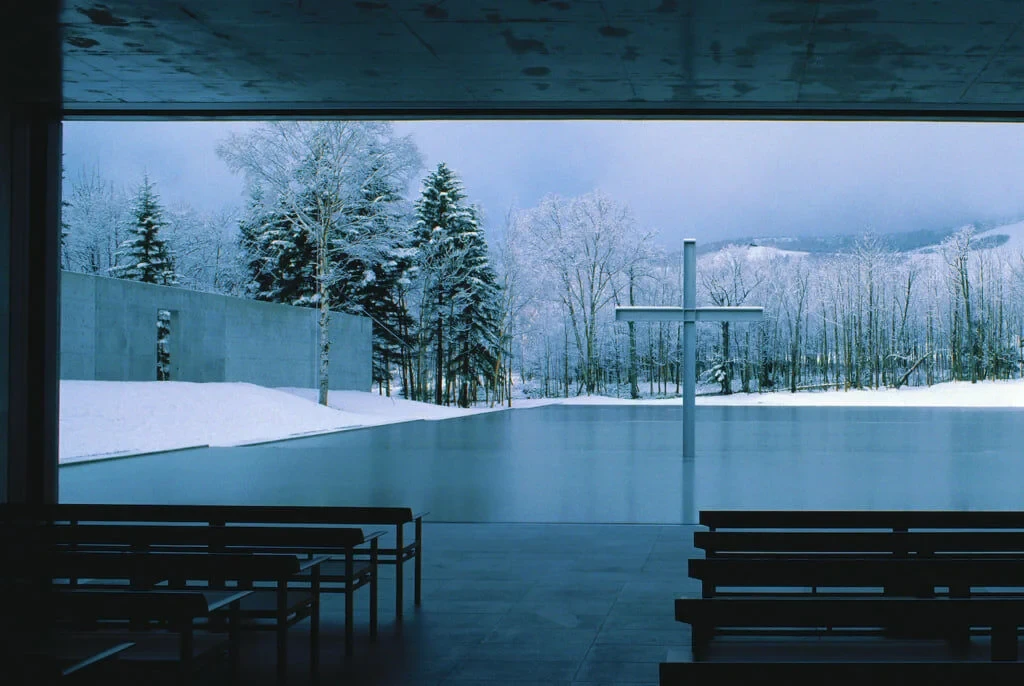
In 2015, Ando unveiled the Hill of the Buddha in Sapporo, Hokkaido. This project encases a 13.5-meter-tall Buddha statue within a hill covered with 150,000 lavender plants. Visitors approach the statue through a tunnel, emerging into an open-air rotunda where the Buddha sits serenely encircled by the lavender-covered mound. This design creates a harmonious blend of architecture, art, and nature, offering a tranquil space for reflection and reverence.


Tadao Ando has designed some of the world's most striking museums, seamlessly blending concrete, light, and movement to create immersive spaces. His 2002 Hyogo Prefectural Museum of Art in Kobe exemplifies this, featuring bold staircases that channel energy and guide visitors through the gallery. His global portfolio includes the Museum of Literature in Himeji, Chikatsu Asuka Museum in Osaka, Naoshima Contemporary Art Museum, Modern Art Museum of Fort Worth, Akita Museum of Art, Bonte Museum in South Korea, Asia Museum of Modern Art in Taiwan, Aurora Museum in Shanghai, and He Art Museum in China—each reflecting his mastery of minimalism and spatial storytelling.
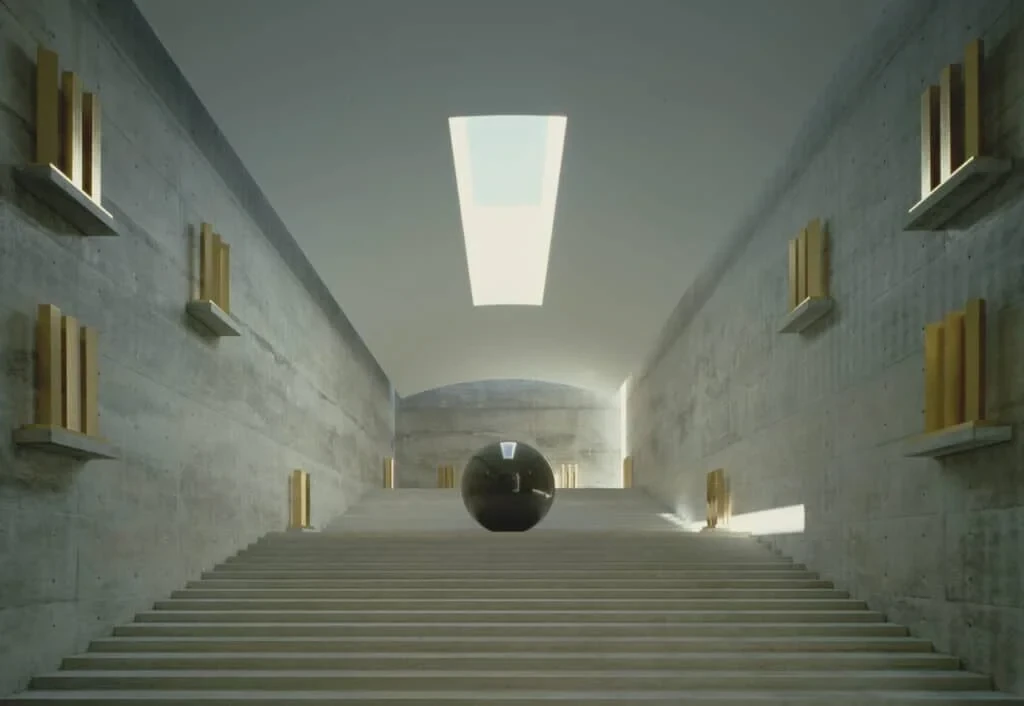
Awards
Tadao Ando has received numerous honors and awards for his magnificent architectural works. His work has received widespread acclaim, and he has won numerous honorary titles, including the Pritzker Architecture Prize in 1995. For a self-taught architect, receiving this honor is a remarkable accomplishment that catapulted Ando to the top of his field.
Ando and his team have also received other prestigious honors in addition to the Pritzker Prize, such as the AIA Gold Medal, the Grand Officer of the Order of the Star of Italy, and the Officier de l'Ordre des Arts et des Lettres in Paris. Because of the significant contribution he has made to the field of architecture, the Japanese Ministry honored him with the Order of Culture in his native Japan. These honors are a testament to Ando's originality, creativity, and commitment to his field.